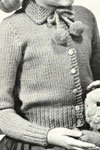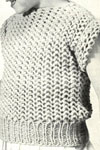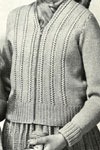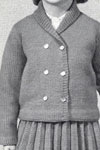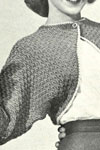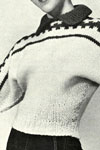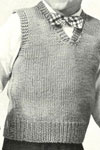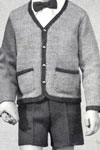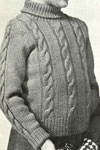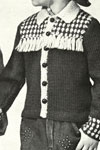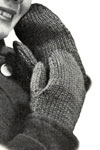Speedknits for Children by Beehive | Patons Book 71
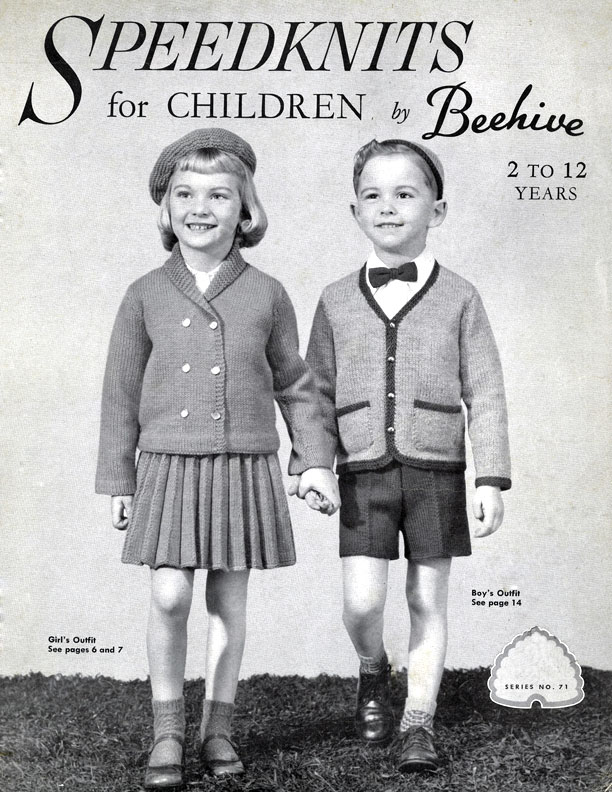
Speedknits for Children by Beehive
Patons & Baldwins, Limited
Book No. 71
No Original Copyright
IMPORTANT INFORMATION
The designs illustrated in this book should fit an average child of the given age. There is, however, such variation of size between one child and another that age is not, of course, a completely accurate guide. For this reason, we suggest comparing the measurements of your child with those given at the top of the instructions which you wish to use.
For pullovers, cardigans and the like, take the chest measurement of your child and choose the size in the instructions closest to that chest measurement, making the slight changes which may be necessary in the length of body to armholes, or in the length of sleeves.
Then to be assured of the measurements on which you decide, it is most important that you knit to the tension given in the instructions with the exact wool recommended.
TO MAKE POM-POM
This is an easy and quickly made pom-pom for the thick wools like Caressa, Speedwell or Double Knitting. Cut a piece of cardboard ¾ inch wide and 4 ins. long. Lay a double strand of the wool along the length of the cardboard. Wind the wool for the pom-pom over the double strand and cardboard, around the width, 220 times. It is faster to use the wool double and wind it 110 times. Tie the two ends of the double strand together, loosely. Remove cardboard and tighten the knot in the double strand. Cut through the loops of the pom-pom and trim to size desired.
"KNIT BELOW" STITCH
Picture shows the right hand needle in position to make the "Knit Below" stitch.
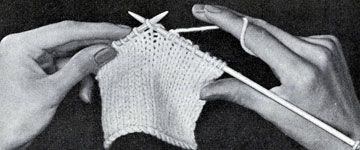
THE WASHING OF WOOLLIES
Well knitted woollies are worthy of careful treatment. They will give long service and keep their shape and softness if this simple routine is followed:—
WASHING
Dissolve completely a little soap, flakes or powder, cold water soap or good detergent in a small quantity of hot water.
Add cold water until the soap suds are only lukewarm, (too hot for the elbow is altogether too hot for woollies). Detergents require much cooler water.
Place the garment in the suds and squeeze gently. Do not rub or leave to soak.
When the garment is clean, squeeze as much water out as possible but do not wring or twist.
Keep the garment supported by the hands whenever it is removed from the water.
RINSING
Rinse at least twice in clean water, no warmer than the washing suds. Every trace of soap must be removed.
A few drops of white vinegar in the final rinse water are good for coloured woollies and particularly helpful when other shades are knitted with WHITE.
DRYING
Never let woollies lie wet. Remove all moisture at once by rolling in a thick towel.
Ease the garment back to its original size and shape. Dry on a flat surface away from excessive heat.
Do not hang up—Dry flat.
NOTE:
Most washing troubles are caused by—too hot water, too much soap, too much rubbing, too little rinsing.
PATONISED WOOLS
To ensure the fullest benefit of increased wearing properties, it is recommended that the foregoing washing routine be followed for garments knitted from Patonised Shrink-resist wools.
CHECK TENSION
The garments in this book are worked to the exact tension given. They are closely knitted to ensure a firm fabric that will wear better and keep its shape longer than a loosely knitted fabric. Check your tension. Before beginning your garment take the wool and needles specified. Cast on 20 stitches. Work 20 rows stocking stitch. Lay work flat on a table and place a ruler across the stitches. Count the number of stitches to one inch and compare with the tension given in the instructions. All given tension in Beehive instructions is measured over stocking stitch. If your tension is too loose try a size smaller needle. If your tension is too tight try a size larger needle.
Be sure to work to exact tension given if you want your garment to work to correct size.
WOOLS TO USE
Every instruction in this book has been carefully prepared with the wool recommended; for perfect satisfaction be sure to use only the wool specified.
When purchasing the wool, be sure to buy enough in one dye lot to complete the garment chosen and avoid trouble in having to match the shade later.
TO BLOCK AND PRESS
Place all knitted pieces on a pad, right side down, measure and pin them to size and shape using rustless pins. Cover with a damp cloth. Holding a hot iron close enough to the cloth to draw steam, smooth over each piece, except for the ribbed bands. Do not press the iron on the work at any time. Remove cloth and leave pieces to dry.
| Pattern Categories Browse the categories to help you find the patterns you're looking for. |
||
|
||








